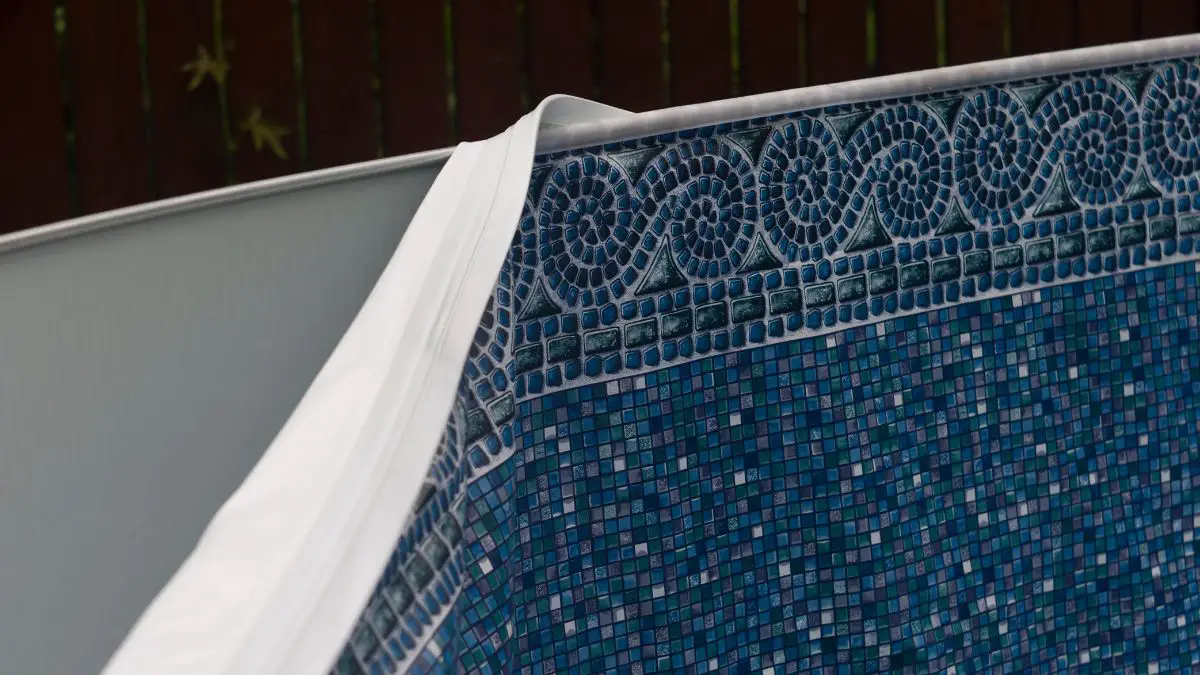Foamy hot tubs are often caused by imbalanced water chemistry, overuse of chemicals, or contaminants like body oils or detergents. To prevent and treat foam, maintain regular cleaning, ensure proper chemical balance, and consider using foam reducers or water clarifiers
Seeing a bubbly heated pool or a scorching jacuzzi that’s lathery might seem harmless, even fun. But it’s essential to understand that what causes foaming in a hot tub can be a sign of underlying issues. These issues can range from minor imbalances in your water chemistry to more significant problems that could affect the longevity of your hot tub.

What Causes Foam in a Hot Tub?
Imagine stepping into your hot tub, expecting a relaxing soak, only to find yourself knee-deep in a boiling spa that’s sudsy. You’re left wondering, what causes foaming in a hot tub? It’s a common question, and the answer lies in understanding the factors contributing to this frothy phenomenon.
Water Quality
The quality of your water plays a significant role. A frothy, warm bath or a bubbly heated pool can indicate imbalanced water chemistry. The pH level of your hot tub water needs to be just right – not too acidic, not too alkaline. When these levels are off, it can lead to a sizzling pool effervescence.
- High pH Levels: A high pH level can cause your hot tub water to become too alkaline, leading to foam. It’s like having a scorching tub that’s lathery.
- Low Alkalinity: On the other hand, low alkalinity can also cause foamy water. It’s a delicate balance that needs to be maintained for optimal water quality.
Chemicals
Let’s talk about additional chemicals. The chemicals you add to your hot tub to keep it clean and safe can also contribute to foam if not used correctly.
- Sanitizers: Overuse of sanitizers can lead to a warm jacuzzi foam. While sanitizers are essential for killing bacteria and other harmful organisms, too much can cause your water to foam.
- Water Softeners: Water softeners can cause your hot tub to turn into a boiling spa froth. These chemicals reduce the hardness of your water, but they can also lead to foam if overused.
Contaminants
Contaminants are a common cause of hot tub foamy water. These can come from a variety of sources, including the users themselves.
- Body Oils and Lotions: When you step into your hot tub, you bring with you body oils, lotions, and other skincare products. These can accumulate in the water, leading to a heated bath bubbles situation.
- Detergents: Residual detergents from your swimwear can also contribute to foam. It’s like having a sudsy boiling spa right in your backyard.

Identifying the Primary Surfactant Sources in Your Hot Tub
Maintaining the chemistry of your hot tub regularly ensures that your spa water is well-blended with sanitizing chemicals and calcium. These elements help to neutralize surfactants, preventing them from forming bubbles.
However, skipping even a few days of maintenance can lead to a buildup of surfactants from three primary sources.
Personal Care Products
Products like makeup or beauty products, conditioner, shampoo, mousse, hair spray or hair products, lotion, and deodorant can put your sanitizing chemicals to the test and eventually cause sudsy chaos.
The more of these products you use – for instance, if you have long hair that requires additional styling products – the higher the likelihood of surfactants accumulating in your hot tub.
Laundry detergent and soap also rank high among the main offenders. While washing our swimsuits is necessary, any residual detergent in the fabric can significantly disrupt your warm water’s chemical balance.
Beverages
Enjoying a glass of wine, a beer, an exotic tropical mix, or even just a soda during your weekend soak is perfectly fine. Keeping these beverages at a distance from the hot tub.
Spilling alcoholic or sugary drinks into your meticulously maintained water can result in foaming. Besides, no one wants to deal with a sticky mess around the spa.
Human Bodies
The substances produced by the human body can be somewhat unpleasant. Oils and dead skin cells are an inevitable part of us. That’s precisely why we use sanitizing chemicals in our hot tubs.
If your sanitizing agents are overwhelmed with body oil and dead proteins, you will likely encounter a foam issue in your hot tub.

Is Foam in a Hot Tub Harmful?
You’ve noticed your warm bath is frothy, and you’re wondering, is this a cause for concern? Is foam in a hot tub harmful? The answer isn’t as straightforward as you might think. While the sight of a bubbly heated pool might not be appealing, the harm it can cause varies depending on the underlying cause of the foam.
Potential Harm to Users
Consider the potential harm to you and other hot tub users. Generally, the foam itself isn’t harmful. However, the substances causing the foam might be. For instance, if your boiling spa is sudsy due to an overuse of sanitizers or other chemicals, it could lead to skin irritation or dryness.
- Skin Irritation: Overexposure to certain chemicals can irritate your skin, leading to redness, itchiness, or rashes. It’s like soaking in a scorching jacuzzi that’s lathery, not a pleasant experience.
- Eye Irritation: Similarly, your eyes might feel sting if chemical levels are too high.
Impact on the Hot Tub
Now, let’s consider the impact on the hot tub itself. A sizzling effervescent tub might seem harmless, but the underlying causes of the foam can potentially damage your hot tub over time.
- Equipment Damage: High chemical levels can corrode your hot tub’s equipment. This includes the heater, pump, and other components that keep your hot tub running smoothly.
- Water Discoloration: Certain contaminants that cause foam can also discolor your water. You might notice your water turning cloudy water or taking on a greenish hue.
In conclusion, while the foam in your hot tub might not be directly harmful, its causes can potentially impact both the users and the hot tub itself. It’s essential to address the issue promptly to prevent any adverse effects.
How to Prevent Foam in a Hot Tub
You’ve experienced the disappointment of a frothy warm bath and the surprise of a bubbly heated pool. Now, you’re ready to take action. You’re ready to learn how to prevent foam in a hot tub. The good news is that with a few preventive measures and regular maintenance, you can enjoy a foam-free hot tub experience.
Regular Maintenance
Regular maintenance is your first line of defense against a boiling spa that’s sudsy. It’s about more than just keeping your hot tub clean – it’s about ensuring its longevity and your enjoyment.
- Regular Cleaning: Regularly cleaning your hot tub helps remove potential contaminants that can cause foam. This includes body oils, lotions, and detergents that can turn your relaxing soak into a scorching jacuzzi that’s lathery.
- Filter Maintenance: Your hot tub’s filter plays a crucial role in keeping your water clean. Regularly cleaning or replacing your filter can help prevent foam.
- Drain and Refill: Over time, the water in your hot tub can accumulate contaminants that lead to foam. Regularly draining and refilling your hot tub can help maintain water quality.
Proper Chemical Balance
Maintaining a proper chemical balance is another crucial step in preventing a sizzling tub that’s effervescent. It’s about finding the right balance – not too much, not too little.
- pH Levels: Maintaining the right pH level in your hot tub is crucial. A pH level that’s too high can lead to foam, turning your relaxing soak into a warm jacuzzi foam experience.
- Sanitizer Levels: While sanitizers are essential for keeping your hot tub clean, too much can lead to foam. Regularly testing your water can help you maintain the right sanitizer levels.
- Use of Chemicals: When adding chemicals to your hot tub, always follow the manufacturer’s instructions. Overuse of chemicals can lead to foam, while underuse can lead to other issues like algae growth.
Preventive Measures
Finally, you can take additional preventive measures to avoid heated bath bubbles.
- Shower Before Use: Taking a quick shower before using your hot tub can help remove body oils and lotions that can cause foam.
- Rinse Swimwear: Rinsing your swimwear before use can help remove any residual detergents contributing to foam.

How to Get Rid of Foam in a Hot Tub
So, you’ve found yourself with a sizzling pool effervescence or a frothy warm bath. The good news is that getting rid of foam in a hot tub isn’t as daunting as it might seem. You can transform your bubbly heated pool into the clear, inviting hot tub you know and love with the right products and methods.
Step-by-Step Guide to Eliminating Foam
Let’s dive into a step-by-step guide on tackling that boiling spa froth.
- Test Your Water: The first step in removing foam is understanding what’s causing it. Test your water to check the pH and sanitizer levels. This will help you identify if a chemical imbalance is causing your scorching jacuzzi to be lathery.
- Adjust Chemical Levels: If your water test reveals a chemical imbalance, adjust your chemical levels accordingly. Remember, too much or too little of certain chemicals can lead to foam.
- Use a Foam Reducer: Specific products are designed to reduce foam in hot tubs. These can be a quick solution to a sizzling tub that’s effervescent. However, they should not be used as a long-term permanent solution, as they don’t address the underlying cause of the foam.
- Clean or Replace Your Hot Tub Filter Cleaner: Your filter is crucial in maintaining soft water quality. If it’s clogged or worn out, it might be contributing to the foam. Cleaning or replacing your filter can help eliminate foam.
- Drain and Refill Your Hot Tub: If all else fails, you might need to drain and refill your hot tub. This can help remove any accumulated contaminants that are causing the foam.
Specific Products and Methods
Now, let’s discuss some specific products and methods to help you eliminate that warm jacuzzi foam.
- Foam Reducers: Foam reducers, also known as defoamers, can quickly fix a foamy hot tub. They work by reducing the surface tension of the water, breaking up the foam.
- Water Clarifiers: Water clarifiers can help improve your clean water quality, reducing the likelihood of foam. They work by clumping small particles into larger ones, making it easier for your filter to catch them.
- Spa System Flush: A spa system flush can help clean out your hot tub’s plumbing system, removing any buildup contributing to the foam.
- Proper Chemical Use: Using your hot tub chemicals correctly prevents and eliminates foam buildup. Always follow the manufacturer’s instructions when adding chemicals to your hot tub.
FAQs About Hot Tub Is Foamy
How do I stop my hot tub from foaming?
Regularly clean your hot tub, maintain your filter, and balance your water’s pH and sanitizer levels. If you’re dealing with a bubbly heated pool, consider using a foam reducer for a quick fix.
Why is my hot tub suddenly foamy?
A sudden onset of foam results from a chemical imbalance, such as high pH levels, leading to a sudsy boiling spa. It could also be due to contaminants like body oils, lotions, or detergents. Testing your water balance and checking your chemical levels is a good idea.
Does high pH make a hot tub foamy?
Yes, high pH levels can make your hot tub foamy. When your hot tub water’s pH level is too high, it can lead to a scorching jacuzzi that’s lathery. It’s important to regularly test your water and adjust your pH levels as needed to prevent foam.
Why is my hot tub spa foaming?
Your hot tub spa might be foaming due to imbalanced water chemistry, chemical overuse, or contaminants. Regular maintenance and proper chemical use can help prevent your sizzling tub from becoming effervescent.








